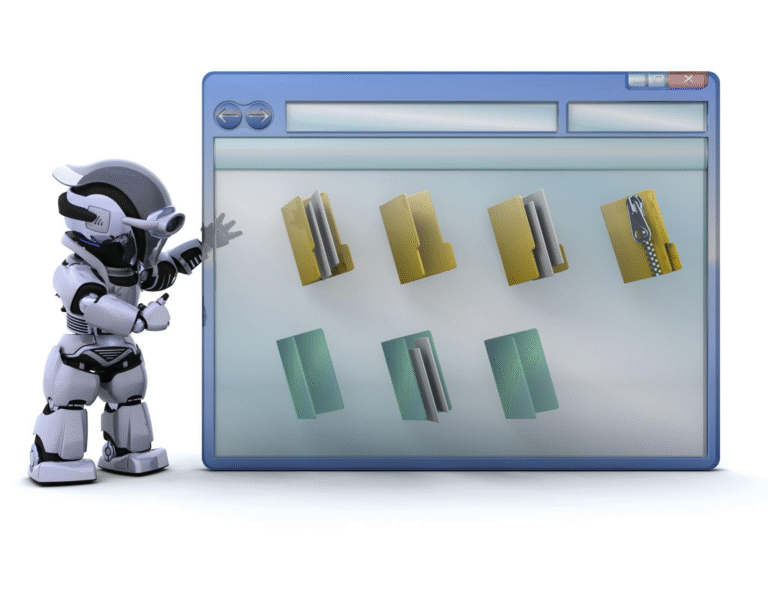The New Frontier of AI-Driven Knowledge Systems
In the fast-evolving digital landscape, businesses are increasingly realizing that data alone isn’t enough — it’s the intelligent interpretation of that data that drives real progress. As organizations seek to make sense of vast repositories of unstructured information, RAG AI solutions (Retrieval-Augmented Generation) have emerged as a game-changing innovation. Combining the power of retrieval-based learning with generative AI, RAG systems enable organizations to access, analyze, and respond to information in ways that were once impossible.
Unlike traditional AI models, which rely solely on pre-trained data, RAG AI integrates external, dynamic data sources into the model’s reasoning process. This ensures that outputs are both contextually accurate and up-to-date, allowing businesses to make informed decisions, automate operations, and enhance customer engagement with unprecedented precision.

Understanding the Core of RAG AI Solutions
At its heart, RAG AI is a hybrid model that marries the strengths of information retrieval and natural language generation. When a query is posed, the model doesn’t merely draw from static knowledge; instead, it searches relevant external databases or documents, retrieves pertinent information, and then generates responses grounded in those findings.
This process ensures transparency, relevance, and factual accuracy, making RAG AI particularly valuable in industries like healthcare, finance, and legal services, where decision-making depends on timely and reliable data. For instance, a financial firm can use RAG AI to pull in the latest market reports before generating a client briefing, while a medical research team might use it to analyze new clinical findings for diagnostic support.
By leveraging RAG AI solutions, companies not only optimize data accessibility but also reduce the cognitive load on employees, empowering them to focus on strategic innovation rather than information hunting.
The Role of Natural Language Processing Services
While RAG AI provides the framework for knowledge retrieval and generation, it’s natural language processing services that bring the model to life. NLP, a subset of artificial intelligence, enables machines to understand, interpret, and respond to human language with nuance and intent.
Modern NLP systems go beyond basic text comprehension — they can detect emotion, summarize large texts, translate content, and even generate conversational dialogue. When integrated with RAG architectures, NLP enhances the model’s ability to understand user intent, contextualize data, and deliver coherent, human-like responses.
For example, a customer support chatbot powered by RAG and NLP can retrieve accurate policy details from a database, comprehend the customer’s issue, and provide a detailed, natural-sounding response in seconds. The synergy between these two technologies transforms static automation into dynamic intelligence, redefining what it means to interact with AI.
Why Businesses Are Adopting RAG and NLP Technologies
Organizations across sectors are rapidly adopting RAG AI solutions and natural language processing services for several key reasons:
Enhanced Knowledge Management – RAG AI creates centralized systems that can access, retrieve, and summarize massive data repositories instantly.
Improved Decision-Making – With access to real-time, verified information, businesses can make faster and more confident decisions.
Scalable Customer Interactions – NLP-powered chatbots and virtual assistants can handle thousands of interactions simultaneously, maintaining consistency and personalization.
Operational Efficiency – Automating document analysis, reporting, and query handling drastically reduces manual workloads.
Continuous Learning – The integration of retrieval mechanisms ensures that AI systems remain relevant and adaptive as new data emerges.
As industries become increasingly data-driven, the combination of RAG and NLP is proving to be the catalyst for next-generation automation and intelligent communication.
The Future of AI-Powered Information Systems
The coming years will witness even deeper integration of RAG AI solutions with advanced natural language processing services, leading to AI systems that are self-learning, explainable, and highly adaptive. These systems will bridge the gap between static data repositories and human reasoning — transforming every aspect of enterprise intelligence, from customer service and compliance to research and innovation.
Moreover, as AI governance and data security frameworks evolve, organizations will have the confidence to deploy these intelligent systems across mission-critical environments. The future of business intelligence will not just be about accessing data — it will be about understanding, contextualizing, and communicating that data in real time, with accuracy and empathy.
Conclusion
In a world overflowing with information, the companies that thrive will be those capable of transforming data into understanding. By combining RAG AI solutions with cutting-edge natural language processing services, enterprises can unlock powerful new dimensions of knowledge, automation, and customer experience. And at the forefront of this transformation stands cognoverse.ai, empowering businesses to move beyond traditional analytics and embrace the true potential of intelligent, data-driven evolution.